#2020 Ford GT Horsepower
Explore tagged Tumblr posts
Photo
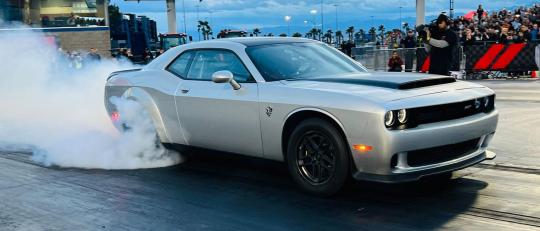
New Post has been published on https://fastmusclecar.com/muscle-cars-with-the-best-power-to-weight-ratio/best-muscle-cars/
Muscle Cars With The Best Power To Weight Ratio
Displacement figures, horsepower, and torque are great all-around numbers to gauge the performance of a muscle car. However, power-to-weight ratios are equally important. The power available to shift the car’s weight is just as important, with the example below being the top players in the market.
In other words, the lightest vehicle with the most power usually wins. This is determined by dividing the horsepower by the car’s weight, with the lowest number being the winner. On paper, this would mean strapping a rocket to the back of a go-kart to obtain the best power-to-weight ratio (PWR). But, in the real world fashion, history, expectations of the car, and materials all play a part.
2019 Chevrolet Corvette ZR1 Power-To-Weight Ratio: 4.72 lbs/hp
A supercar more than a muscle car, the 2019 Chevrolet Corvette ZR1 can deliver 755HP, with 715 pound-feet of torque, a 0-60 time of 3.0 seconds and a top speed of 212mph. The 6.2-liter supercharged V8 engine and seven-speed transmission have turned the long-standing classic into a modern powerhouse, but still with the bowtie attributes.
2022 Ford GT Power-To-Weight Ratio: 4.62 lbs/hp
In reality, the Ford GT was made as a long-distance sports car to compete in the 24 Hours of LeMans race, winning 4 times. The Ford GT has a 3.5-liter twin-turbo V6 producing 660 horsepower, 550 pound-feet of torque, a top speed of 216mph and a 0-60 time of 3.0 seconds.
2023 Dodge Challenger Demon 170 Power-To-Weight Ratio: 4.17 lbs/hp
Finally, a full-fat muscle car and probably the most potent ever made. The 2023 Dodge Challenger Demon 170 could be the last hurrah of the ICE muscle cars, but what a way to go out if that is the case. The 6.2-liter Supercharged Hemi V8 produces 1,025 horsepower, 945 pound-feet of torque, weighs 4,275 lbs, with a 0-60 time of 1.66 seconds, and a top speed of 2215 mph.
These stats have won the Dodge Challenger Demon 170 accolades as the Fastest Pony car, and the fastest factory Dodge muscle car ever produced. The PWR rivals lighter-weight European supercars to give you an idea.
Other notable mentions include the 2020 Ford Mustang Shelby GT500 with 5.5 lbs/hp PWR, The 2023 Dodge Charger SRT Redeye Jailbreak Widebody with 5.69 lbs/hp, The 1969 Dodge Dart GTS with 7.26 lbs/hp, and the 1969 Plymouth Road Runner with 8.08 lbs/hp.
0 notes
Text
BNHA X CARS
So, this is basically BNHA Street racer AU. But to be more precise I’m picking the cars for the characters from BNHA. Because cars have characteristic, it has personality and it describes you as a person. Not just based from the body but the engines and the car as whole. So, this is my pick of cars for the character of BNHA. If you have different opinion let me know, I would love to hear all of your thoughts and if you use my list you can go ahead and use it (But please do tell me, because hearing it will be my vindication and that would make me really happy).
Part 1 For the boys
I’m going to divide it into 2 cars. One is for daily drive/Sports car and the other is The Supercar. The Sports car will describe them as characters individuals. While the Supercar will describe their full potentials.
Midoriya Izuku:
Midoriya Izuku, The protagonist of the Anime. He is too good of a boy to mess around street Racing. The Color for his car is obviously Green, in that case I Recommend Him.
Sport car/ Daily Drive:
The Mitsubishi Eclipse GSX.
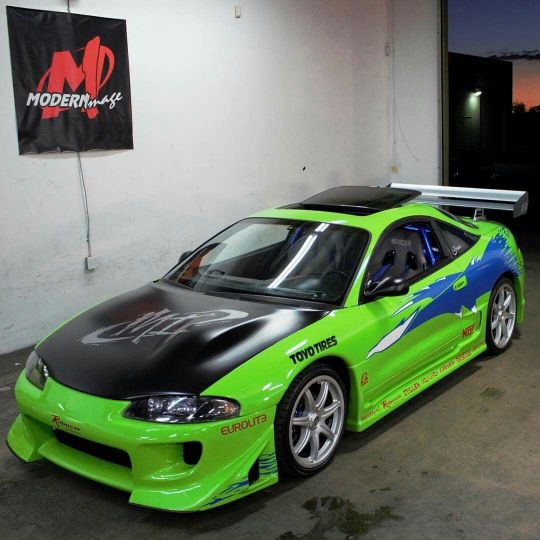
To be more specific. It is Brian’s First car In the Fast and the furious franchise (R.I.P Paul Walker). This car is one of the Tuners favorite car to modify. It is run by 4G63 Engine, it is the same Engine that run an EVO F*CKING LANCER which is one of the finest cars that has been made on earth (Minus the Turbo). So it plays well with the whole inheritance thing with All Might.
Supercar:
For the supercar, I would Recommend McLaren 675LT
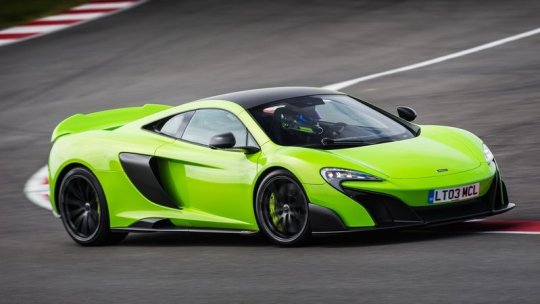
This car Look Great In green. The whole characteristic of this car reminds me of Midoriya. This car shown how it can blend to the society, how it was able to move fast and aggressively while at the same time maintaining Elegance. This car looked slim, but its performance is something else 3.8 L V8 Twin Turbo Rear Wheel Drive (RWD) Gives the ability for the driver to drive like a maniac. The car produces more or less 675 Horsepower (Just like its name) and can go to 0-100 Km in 2.9 Seconds and a top speed with 330 Km/h (205 Mph).
Bakugo Katsuki:
For Bakugo, His car has to be loud and Fast! He needs a car that’s intimidating. For the color I’m Thinking Red, Yellow or Black. But since the car need to look Antagonizing, I’m going with black. So, the car that I propose.
Sport Car/ Daily Drive:
Dodge Challenger SRT Hell Cat 2015

This car is a 6.2L Hemi V8 Supercharged. The roars in this car is nothing short. This car is for sure is Intimidating. The roar of the engine is equivalent to Bakugo’s Roar of explosive anger. I was considering the newer one like the SRT Redeye Hellcat or even The Demon. But the demons is more of the inner demon screaming trying to get out. It needed a Rumbling sound of the V8, The insane roar that is deafening.
Supercar:
For the Supercar, it is very difficult. I can choose Hyper cars but they just felt a bit too well mannered compared to Bakugo. But I’ve given a lot of thought and the only car that fits is This
Pagani Zonda R

This car is basically an f1 with a two-seater and a roof. This bad boy is a track only car. So, it is “Street Illegal!!” But that won’t stop Bakugo for using this beauty. This car on high rev speaks will be all the explanation needed on the reason why I chose this car. A car with 700 BHP and only weight 1,070 Kg (In comparison Ford focus weight 1,471 Kg) Which is like a feather.
Todoroki Shoto:
For Todoroki His car has to be cool, matured and Luxurious but also High performance. I’m a bit mixed up with the colors Whether I should make it blue or white or red. But since I cant decide I leave it in the ‘Grey’ area. Get it? Ill just get on with it.
Sport Car/ Daily Drive:
Aston Martin DB11

Aston Martin is well known on it’s Luxury and History. Which fits Todoroki’s Prince aura/Characteristics. The performance is also nothing short, Aston Martin is also well known to make a brilliant Engine for racing. A twin turbocharged V12 Produce 600 BHP with a top speed 201Km/h (125Mph).
Supercar
For the Super car, I think Lamborghini Huracan Performante.
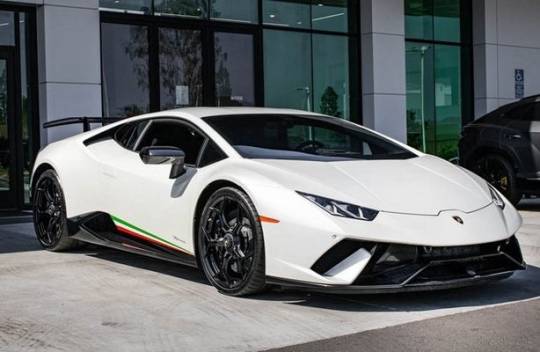
It is a naturally aspirated 5.2L V10 Engine AWD. This car has a fierce fiery engine on its car but still has that cool matured Body. And the ALA (Aerodinamica Lamborghini Attiva) Is brilliant. It is an active Aerodynamic system that allows the car to go faster.
Tenya Iida:
Sport Car/ Daily Drive:
Is the Brabus 800 GT 63s
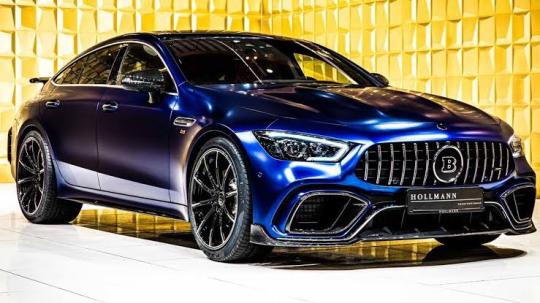
This car is perfect fot Iida, It has a look in which my friend quote “Sophisticated Look”. And Mind you this car is probably The Fastest Car! For the sport/daily drive Car compare than anyone else in the list. This car packs a crazy 800 BHP and that’s says it all
Supercar:
Bugatti Veyron SS
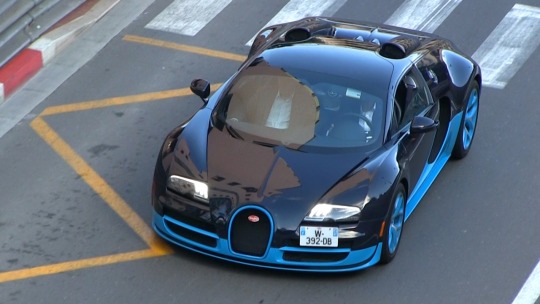
The fastest Car In the world! In 2010. The specific look that I would like to go is Drift From Transformer: Age Of Extinction. That Blue Lining is perfect for Iida. For some people engines might be boring, But this car have the power of 1200 Horses in it
Kirishima Eijiro
Sport Car/ Daily Drive:
The car that this Manly man need to go with is the 2020 Mustang Shelby GT500.
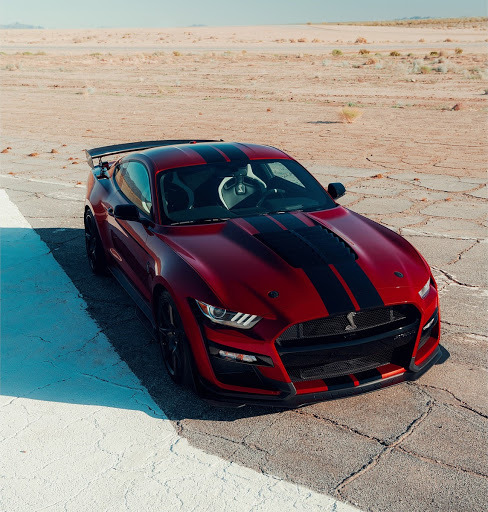
The Engine has a named called the “Predator” V8 Engine. 750 BHP is nothing short and the roar from within is on par with Bakugo’s SRT Hellcat.
Supercar:
I was having second thought of choosing this car. But whenever I think of Kirishima in a car, This car always pops into my head
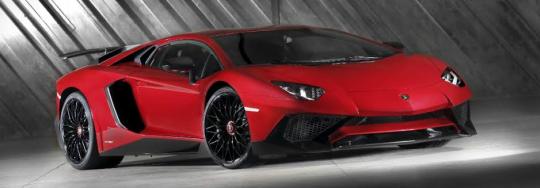
Lamborghini Adventador SV. This car Looked manly and menacing. Why I thought about this car, is that it associated it self with a bull in which Kirishima and this car can relate to. A loud V12 Engine roars loud and deep in a intimidating voice and its perfect.
Okay that’s all I can give for this part. Because of limitation I cant post it all. But there will be more to come not just for the students but many more.
#BNHA#MHA#Boku No Hero#My Hero Academia#Midoriya Izuku#Bakugo Katsuki#Todoroki Shoto#Tenya Ida#Kirishima Eijiro#street racer au#Street Racer#Racers au#Racing#au#Cars#European#JDM#American Muscles#BNHA AU
28 notes
·
View notes
Photo

Here it is- probably the worse kept secret on social media for the past few weeks- DEARBORN, Mich., July 21, 2020 – Peak horsepower: 1,400 – and make it electric. Mission accomplished: Ford introduces Mustang Mach-E 1400, an all-electric road rocket that shows just how much performance can be harnessed without using a drop of gas. Coming hot on the heels of the 1,400-horsepower all-electric Mustang Cobra Jet 1400, this one-off Mustang Mach-E with its seven electric motors and high downforce is ready for the track, drag strip or gymkhana course – anywhere it can show how electric propulsion promises extreme Mustang performance. Developed in collaboration with RTR and built off a Mustang Mach-E GT body-in-white, the prototype targets 1,400 peak horsepower. The chassis and powertrain work together for a multitude of setups offering capability unlike any other vehicle. #ford #mustang #fordmustang #fordperformance #mache #rtr #ev #electric https://www.instagram.com/p/CC5n9_yhvzg/?igshid=11ny6okqff3xf
37 notes
·
View notes
Text
BNHA X Cars
KaminariSo, this is basically BNHA Street racer AU. But to be more precise I’m picking the cars for the characters from BNHA. Because cars have characteristic, it has personality and it describes you as a person. Not just based from the body but the engines and the car as whole. So, this is my pick of cars for the character of BNHA
Part 1 For the boys
I’m going to divide it into 2 cars. One is for daily drive/Sports car and the other is The Supercar. The Sports car will describe them as characters individuals. While the Supercar will describe their full potentials.
Midoriya Izuku
Midoriya Izuku, The protagonist of the Anime. He is too good of a boy to mess around street Racing. The Color for his car is obviously Green, in that case I Recommend Him.
Sport car/ Daily Drive:
The Mitsubishi Eclipse GSX.

To be more specific. It is Brian’s First car In the Fast and the furious franchise (R.I.P Paul Walker). This car is one of the Tuners favorite car to modify. It is run by 4G63 Engine, it is the same Engine that run an EVO F*CKING LANCER which is one of the finest cars that has been made on earth (Minus the Turbo). So it plays well with the whole inheritance thing with All Might.
Supercar:
For the supercar, I would Recommend McLaren 675LT
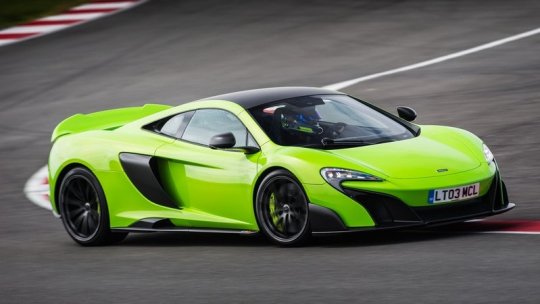
This car Look Great In green. The whole characteristic of this car reminds me of Midoriya. This car shown how it can blend to the society, how it was able to move fast and aggressively while at the same time maintaining Elegance. This car looked slim, but its performance is something else 3.8 L V8 Twin Turbo Rear Wheel Drive (RWD) Gives the ability for the driver to drive like a maniac. The car produces more or less 675 Horsepower (Just like its name) and can go to 0-100 Km in 2.9 Seconds and a top speed with 330 Km/h (205 Mph).
Bakugo Katsuki
For Bakugo, His car has to be loud and Fast! He needs a car that’s intimidating. For the color I’m Thinking Red, Yellow or Black. But since the car need to look Antagonizing, I’m going with black. So, the car that I propose.
Sport Car/ Daily Drive:
Dodge Charger SRT Hell Cat 2015
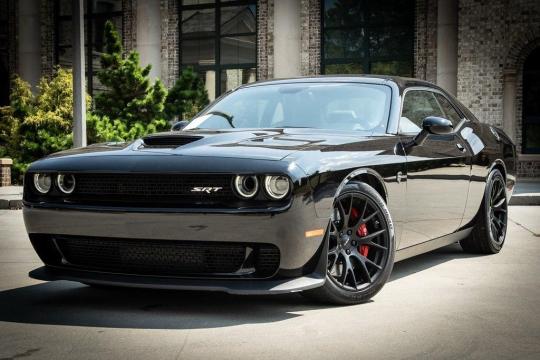
This car is a 6.2L Hemi V8 Supercharged. The roars in this car is nothing short. This car is for sure is Intimidating. The roar of the engine is equivalent to Bakugo’s Roar of explosive anger. I was considering the newer one like the SRT Redeye Hellcat or even The Demon. But the demons is more of the inner demon screaming trying to get out. It needed a Rumbling sound of the V8, The insane roar that is deafening.
Supercar:
For the Supercar, it is very difficult. I can choose Hyper cars but they just felt a bit too well mannered compared to Bakugo. But I’ve given a lot of thought and the only car that fits is This
Pagani Zonda R
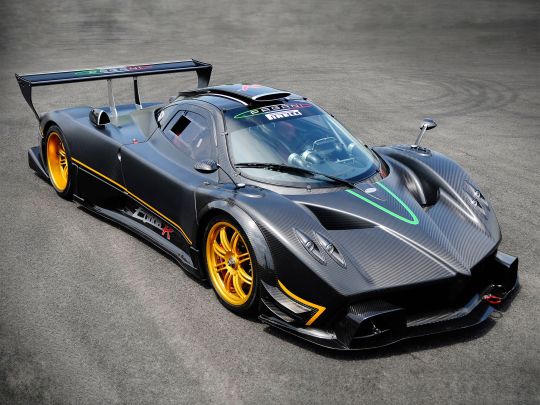
This car is basically an f1 with a two-seater and a roof. This bad boy is a track only car. So, it is “Street Illegal!!” But that won’t stop Bakugo for using this beauty. This car on high rev speaks will be all the explanation needed on the reason why I chose this car. A car with 700 BHP and only weight 1,070 Kg (In comparison Ford focus weight 1,471 Kg) Which is like a feather.
Todoroki Shoto
For Todoroki His car has to be cool, matured and Luxurious but also High performance. I’m a bit mixed up with the colors Whether I should make it blue or white or red. But since I cant decide I leave it in the ‘Grey’ area. Get it? Ill just get on with it.
Sport Car/ Daily Drive:
Aston Martin DB11

Aston Martin is well known on it’s Luxury and History. Which fits Todoroki’s Prince aura/Characteristics. The performance is also nothing short, Aston Martin is also well known to make a brilliant Engine for racing. A twin turbocharged V12 Produce 600 BHP with a top speed 201Km/h (125Mph).
Supercar
For the Super car, I think Lamborghini Huracan Performante.

It is a naturally aspirated 5.2L V10 Engine AWD. This car has a fierce fiery engine on its car but still has that cool matured Body. And the ALA (Aerodinamica Lamborghini Attiva) Is brilliant. It is an active Aerodynamic system that allows the car to go faster.
Tenya Iida:
Sport Car/ Daily Drive:
Is the Brabus 800 GT 63s
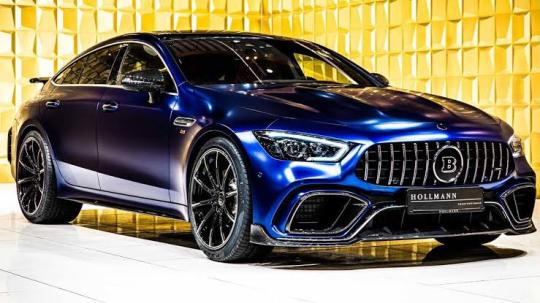
This car is perfect fot Iida, It has a look in which my friend quote “Sophisticated Look”. And Mind you this car is probably The Fastest Car! For the sport/daily drive Car compare than anyone else in the list. This car packs a crazy 800 BHP and that’s says it all
Supercar:

The fastest Car In the world! In 2010. The specific look that I would like to go is Drift From Transformer: Age Of Extinction. That Blue Lining is perfect for Iida. For some people engines might be boring, But this car have the power of 1200 Horses in it
Kirishima Eijiro
Sport Car/ Daily Drive:
The car that this Manly man need to go with is the 2020 Mustang Shelby GT500.

The Engine has a named called the “Predator” V8 Engine. 750 BHP is nothing short and the roar from within is on par with Bakugo’s SRT Hellcat.
Supercar:
I was having second thought of choosing this car. But whenever I think of Kirishima in a car, This car always pops into my head
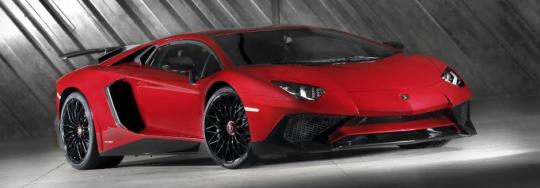
Lamborghini Adventador SV. This car Looked manly and menacing. Why I thought about this car, is that it associated it self with a bull in which Kirishima and this car can relate to. A loud V12 Engine roars loud and deep in a intimidating voice and its perfect.
Sero Hanta
Sport Car/ Daily Drive:
For Sero the car has to be traditional but still a good car nonetheless. So I pick A classic Porsche 911 turbo 1982.
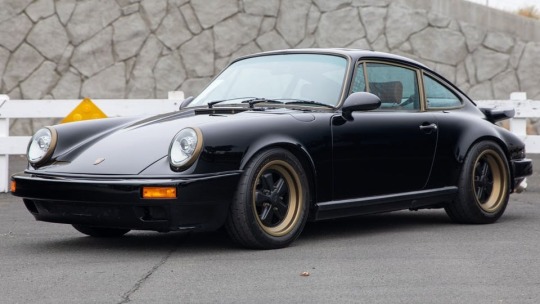
It is a classic sports car, It is tunable which make the car run fast.
Supercar:
Ferrari 458 Italia

This car is a normal Aspirated V8 with a high rev engine. It creates something Revolutionary From something traditional.
Kaminari Denki
Sport Car/ Daily Drive:
It has to be the SUPRA!!!!!!

This car is definitely a meme, it fits with Kaminari Personality. Seeing them is like “WTH ARE YOU DOING?!” Because both Kaminari and the car would do something ridiculously stupid.
Supercar:
For the Supercar I Would say The Lexus LFA

Lexus is one of the Artistic Legacy of the JDM Cars. It is one of the legendary Supercar that ever existed. The Normal aspirated V10 Sounded like Pure Thunder striking down on the earth. Sound menacing and amazing. It fits for Kaminari Racing Persona (Or even his villain Persona).
Mashirao Ojiro
Sport Car/ Daily Drive:
Ojiro is a traditional Japanese person, So his car has to be totally Japanese. My pick have to be The S30 Fairlady Z.
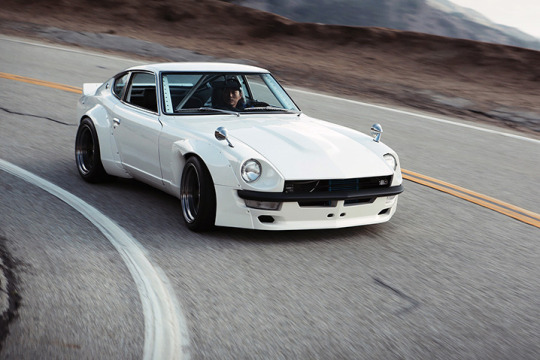
To be exact the RB26 Swapped Fairlady Z from Sung Kang (Han’s Actor car from “Fast and Furious”) And that’s all I need to say about this car.
Supercar:
For the Supercar It has to be the last piece of The JDM Legend. It is The GTR R35 NISMO.
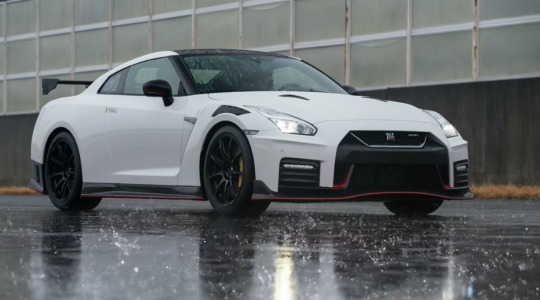
This car is perfect for Ojiro, They both are the Representative Character of Japan.
Tokoyami Fumikage
Sport Car/ Daily Drive:
Blackbird 370 z

For me it’s a no Brainer. This car was featured as the Replacement of Blackbird in wangan Midnight When they aren’t allowed to use the Porsche. The slick Headlight and the whole body look is the description of Tokoyami Dark Shadow
Supercar:
Mclaren MP4-12C

That Describes Tokoyami as a whole. One of the best car that ever created in history that changes the whole world. With the black fierce look, This car looks like a shark that flies on land.
Sato Rikido
Sport Car/ Daily Drive:

Sato is a muscular guy. So His sports car is definitely a Muscle Car. But It seems I have a trouble in finding it, It has to be a classic but not too old. In that reason I recommend Saleen s281 2000
It has that sporty look but still have the Muscle car Essence and history
Supercar:
For the Supercar It has to be The Corvette C8.R
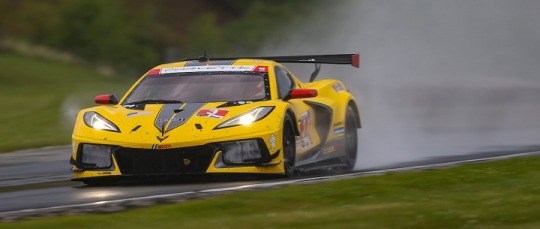
This car is a new take to American cars. It is a Incredible move from the American automotive Industries.
Koda Koji
Sport Car/ Daily Drive:
For Koda He is definetly a good Boy so hew probably uses a 4-door car. For instance The Subaru WRX STI 2016.
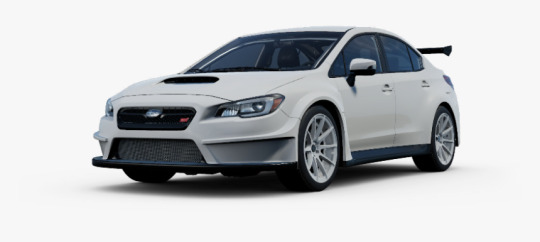
It doesn't seems Menacing but it still can move around well and when it drives, it definetly drives well.
Supercar:
For the Supercar it is definetly a NSX-R 1992 Tuned with a Rocket Bunny Body Kit.
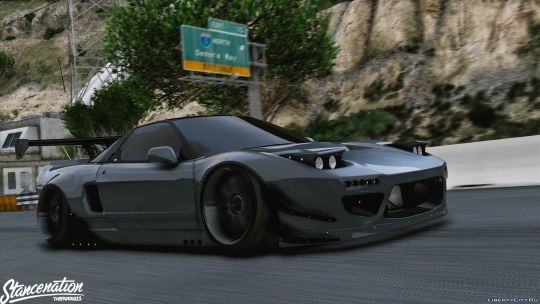
Koda is definitely a Honda city boi. From the name itself, I am 100% it fits with Koda. Back in the day if you want a Ferrari but you can’t afford one. You’ll buy an NSX.
Shoji Mezo
Sport Car/ Daily Drive:
For Shoji I think Ford’s Trophy truck.
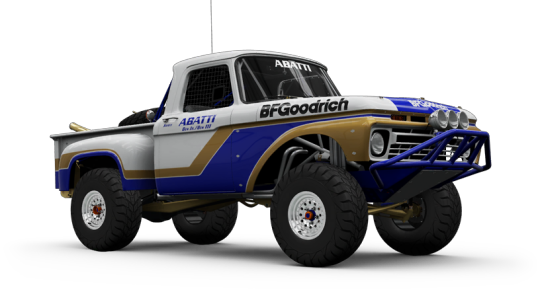
A friend of mine said that Shoji, is the kind of guy who would drive a van for daily basis (So I guessed it has to be an American Car). But to me, Shoji is the Kind of guy that likes to get Dirt under his wheels. And I'm pretty sure Shoji is the kind of kid that doesn’t Mind flying in the car on daily basis.
Supercar:
For the Supercar I propose, Ford Gt.

It is well planted and the car is very wide. Fitting to describes Shoji’s ‘Arms’. Although it might not have similarities with his daily car, But this car is all I could think of.
Aoyama Yuga
Sport Car/ Daily Drive:
For the Daily Drive, it is obviously something Luxurious, Something High class Like Bentley GT 2019. The V8 Version.

It is a confiscated yet sporty look in a car, It looked like as if he stands out compares to the other Luxury Cars
Supercar:
For the Supercar, It has to be describe as “Noblesse oblige” And the Car that fits the most is Noble M600.
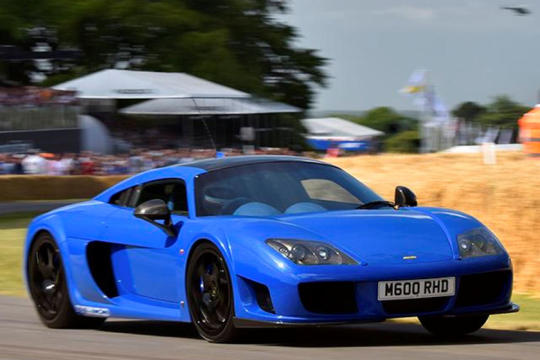
It is a Supercar with all the classic features. It is a RWD Manual Transmission Car, a twin turbocharged 4L V8. Packs 640 BHP 0-60 in 3.1 Second.
Mineta Minoru
Sport Car/ Daily Drive:
It’s the Mitsubishi Eclipse Spyder GTS

Basically, this car is the Japanese Equivalent To pimp rides. Even though This car is featured in The Fast and The Furious, It is just a now show car. Compared the old one, This version is a slower and much more difficult to Modify. But it is still a nice car and fun to drive with, and it is a popular car in the car culture.
Supercar:
For Mineta The Supercar might be really difficult. So in the end I just came up with the Villain version. (Inspired by ‘Nadaboodraws’ Villain Mineta on Instagram) I came up with this

It is the Audi R8, It is one of the best Affordable Supercar you can get in the world. It is 4wd But it is still an aggressive car with a mean Look.
Okay that’s all I can give for this part. For the next one will be the girls of class 1-A. If you have different opinion let me know, I would love to hear all of your thoughts and if you use my list you can go ahead and use it (But please do tell me, because hearing it will be my vindication and that would make me really happy). Anyway, thank you for reading until this far.
#BNHA#MHA#Boku No Hero#My Hero Academia#Midoriya Izuku#Bakugo Katsuki#Todoroki Shoto#Tenya Ida#Kirishima Eijiro#Sero Hanta#Kaminari Denki#Mashirao Ojiro#Tokoyami Fumikage#Sato Rikido#Koda Koji#Shoji Mezo#Aoyama Yuga#Mineta Minoru#street racer au#Street Racer#Racers au#Racing#au#Cars#European#JDM#American Muscles
8 notes
·
View notes
Photo

The 2020 Ford Mustang GT is supported with @hptuners software. This vehicle will require an HP Tuners interface, and VCM Suite version 4.5 or newer. Licensing costs 4 credits, and an internet connection is required. • • • #hptuners #hptuned #hpt #automotive #carlifestyle #horsepower #speed #tuning #ford #mustang #gt #mustanggt https://www.instagram.com/p/CCXXufulxJT/?igshid=1quh85bfoljh2
2 notes
·
View notes
Text
Mitsubishi RVR: the forgotten jewel
Words and pics by Michael Hozjan
In another lifetime I had a 1972 Dodge Colt station wagon. It was my first car with real heat (having had several Beetles before that) and it served my well, very well. Monday to Friday it took me to work and back, when spring came around you’d find me at the local drag strip on Friday nights going up against…and winning, anything they put in the other lane. On weekends I’d throw on a roof rack, fill up the back with building materials and head up into the hills to attack my new cottage project.
Why am I rambling on about a Colt wagon in a Mitsubishi RVR review? Simple, that Colt had a Mitsubishi engine and was the American version of the Mitsubishi Gallant. It was also was my first real exposure to Japanese engines, and it was bulletproof.

One thing I’ve always said about Mitsubishi products, “Great engines but loud cars as they lack noise insulation.” Well I’m pleased to say that after several years of absence behind the wheel of a Mitsubishi product, their entry-level SUV, the RVR proved me wrong.
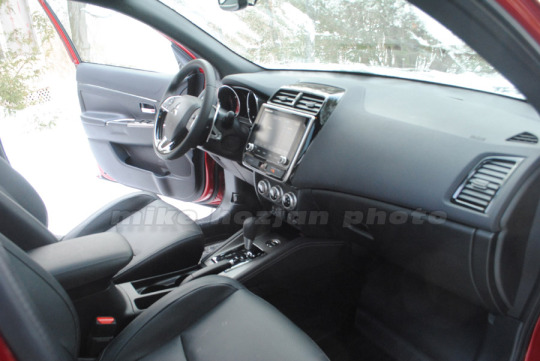
Over 1.3 million RVRs have been sold in 90 countries over the years, yet RVR moniker doesn’t exactly come to mind on our shores when thinking about subcompact/compact SUVs and crossovers. That’s really too bad, because the little Mitsubishi has a lot going for it, including one of the best warranties in the industry, and with nine years under its belt, it has a proven reliability history, and is affordable!
Yes it’s got some noteworthy competitors in the segment; Hyundai Kona, Honda HR-V, Toyota C-HR, Nissan Qashqai, Ford EcoSport, Chevrolet Trax and the Jeep Renegade but the RVR betters more than one. Mitsubishi has upped the anti with this year’s model refresh.
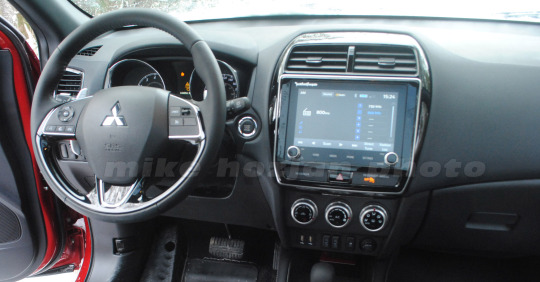
The 2020 RVR gets a clean facelift from the front door pillars forward, including LED lighting and the new corporate grille. Chrome shark gills on the front fenders now serve as the basis for the side crease line while the rear has been reworked to give the RVR a more robust look. Likewise, the interior has been upgraded with new materials and colours, and of course the must have of must haves, Apple CarPlay and Android Auto compatibility via the standard 8-inch touchscreen.
Yes it still rides on the same RVR platform and uses the same engines that have been around since 2011, and yes the nine-year old chassis still offers a ride and handling that outshines most of the others in the niche market. Proof that Mits engineers were ahead of the game all along and holding true to the old adage of “why fix it if it ain’t broke”, and isn’t that a testament to a well thought out design, if it’s still clean and fresh nine years later.
Head office has shuffled their trim levels to improve its value proposition. Two front wheel drive models serve as entry points with the base ES starting at $22,998 and base all-wheel drive version (ES AWC) coming in at $25,298. Sadly the extinction of the manual transmission (another Mits stronghold) continues. I couldn’t have won all those races with a CVT!
Two naturally aspirated four-cylinder engines are offered, a 2.0L and a 2.4L. The first offers 148 horsepower and 145 lb-ft of torque, while the bigger one, only available on the SE AWC trim ($27,997) or higher, pumps out 168 horsepower and 167 lb-ft.

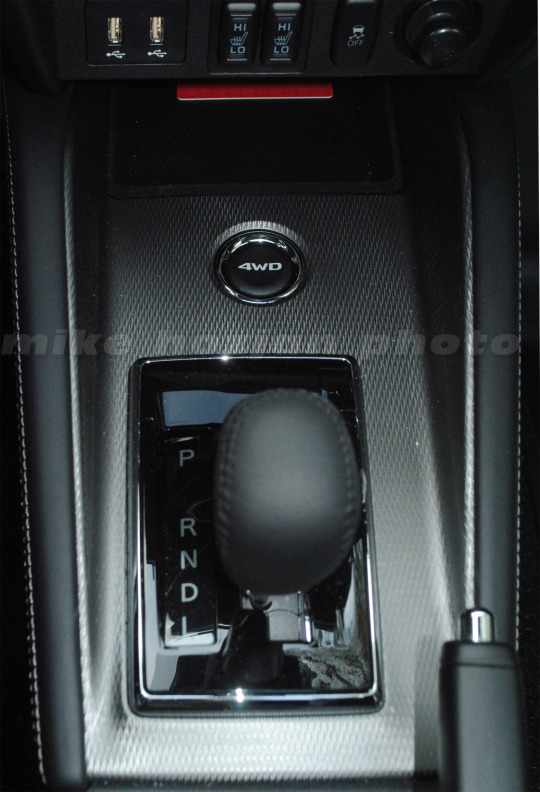
My top tier GT AWC (priced at a hair under $34,000), came with that bigger engine and the lockable 4WD system – a rarity not only in this size segment but with larger sport utes as well. Regular readers will recall that it’s one of the features I’m looking for in our replacement of the family X-Trail which too, has a locking system. Simply put you can switch from a conventional front-bias reactive system where the vehicle is front-wheel-drive, engaging the rear wheels when slip is detected, which ultimately improves gas pump stops. At the push of a button, AWC locks all four wheels for preventive all-wheel-drive.
The RVR’s cabin is roomier than most other subcompacts, with a panoramic roof adding to the airiness. Visibility is very good all around.
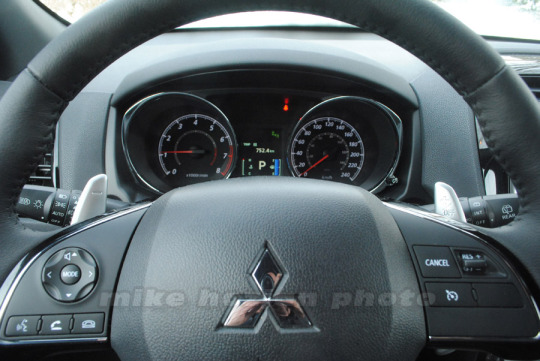
Whether we’re talking steering wheel mounted controls or dash controls they’re large, simple, straightforward and easy to use. Great ergonomics make it shine in a world where everything has been overblown and over thought, and of course you’re not paying for a rolling gadget wagon.
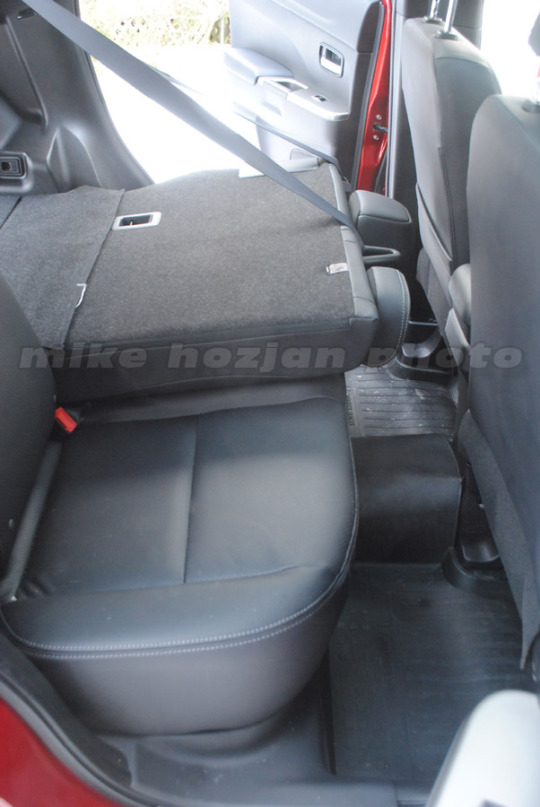
I did get pampered with the GT’s 710-watt Rockford Fosgate punch audio system with 9 speakers and the trunk mounted subwoofer. There’s 20 cubic feet of cargo space with all the seats in position and just under 50 cu. ft. with the rear seats folded.
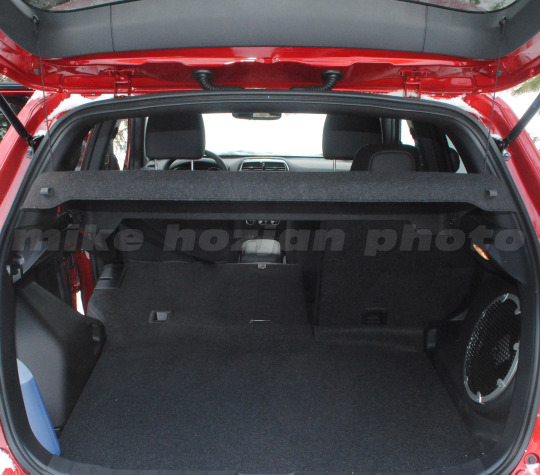
On the road the 2.4 L moved the crossover about nimbly delivering smooth and linear power. Acceleration is decent as long as you don’t mind the CVT’s whine –turn up the 710 watts. The steering wheel mounted paddle shifters added to the fun factor. The chassis offers just enough stiffness to allow for some sporty antics and sooft enough to cushion washboard roads and city potholes. In fact it’s close to having one of the best rides in the category.
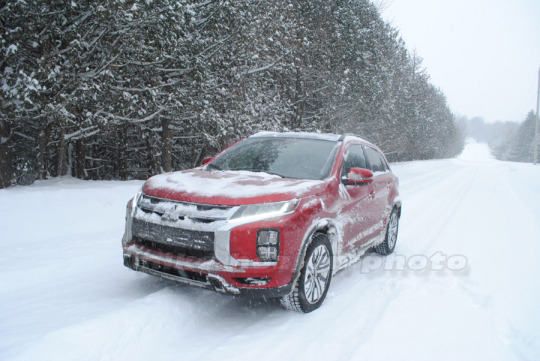
I averaged 9.0 L/100 km during my week-long ride with mostly highway driving. Hampered no doubt by winter warm ups and plowing through the powder.
If someone were to describe a vehicle to you as being affordable, built to last and fuel-efficient, equipped with all-wheel-drive and backed by an industry-best warranty, you’d be silly to dismiss it as an option, and the 2020 Mitsubishi RVR deserves to be taken seriously by those in the market for a subcompact SUV.

Yes the RVR has some well-known serious competitors in the segment. What do they say when you’re number two you try harder, well when you’re number five you’ll try even harder. Truth is Mitsubishi doesn’t need to try harder, at the risk of repeating myself, it already has an affordable fuel-efficient, reliability proven SUV with an industry-best warranty. The problem is getting the word out.
Consider yourself warned.
Price as tested: $33,998
#mitsubishi#rvr#subcompact#compact#crossover#suv#c-hr#hr-v#jeep#honda#toyota#qashqai#nissan#review#trax#ecosport#ford#chevrolet#renegade
3 notes
·
View notes
Photo





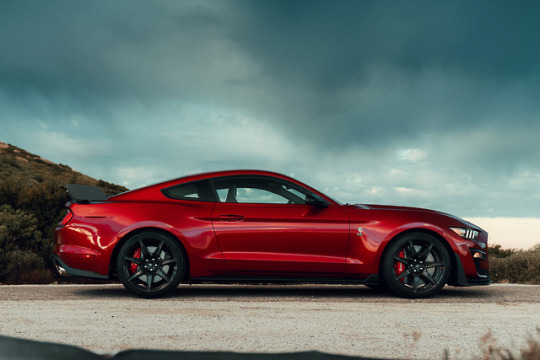

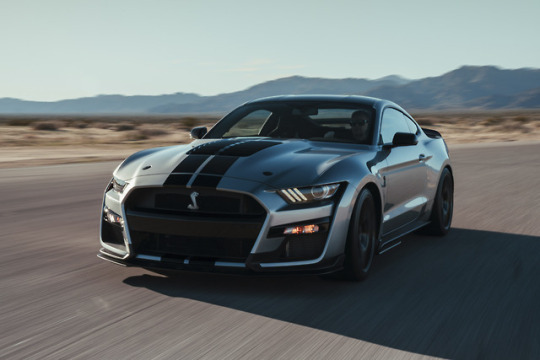
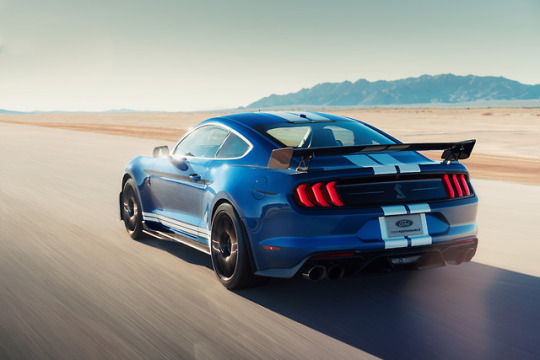

First Look: The 2020 Shelby GT500
The all-new Shelby GT500 – the pinnacle of any pony car ever engineered by Ford Performance – delivers on its heritage with more than 700 horsepower for the quickest street-legal acceleration and most high-performance technology to date ever offered in a Ford Mustang.
Arriving this fall to join its Shelby GT350 stablemate, Shelby GT500 is engineered to attack on all fronts. At the drag strip, it’s set to produce a projected 700-plus horsepower via its first-in-class dual-clutch transmission. At the track, performance improves even more thanks to its race-bred chassis, custom Michelin tires and the largest front brake rotors ever available on an American sports coupe. On the street, its menacing aerodynamic design and Ford Performance driver control technologies make every moment behind the wheel even more exhilarating.
Most powerful Ford production car ever In the process of making the all-new Shelby GT500 the quickest street-legal Mustang ever, Ford Performance created an exclusive powertrain to deliver new levels of power and torque.
The Shelby GT500 starts with a supercharged 5.2-liter aluminum alloy engine built by hand. To keep the intake air cooler and deliver a lower center of gravity, the team inverted a 2.65-liter roots-type supercharger with air-to-liquid intercooler tucked neatly in the V8 engine valley.
Like the Shelby GT350, the aluminum alloy block features weight-saving wire-arc cylinder liners and high-flow aluminum cylinder heads, plus larger forged connecting rods, improved lubrication and cooling passages. Beneath that, a structural oil pan adds strength, reduces vibration, and features a patented active baffle system to keep oil where it’s needed.
To channel power and torque to the unique carbon fiber driveshaft, Ford Performance leveraged learnings from the tuning of its Ford GT supercar’s dual-clutch transmission. The team selected a TREMEC 7-speed dual-clutch transmission, which can shift smoothly in less than 100 milliseconds – markedly faster than any manual gearbox. This dual-clutch transmission is designed for a number of drive modes, including normal, slippery, sport, drag and track, and features line-lock and rpm-selectable launch control through selectable Track Apps.
Next-evolution Mustang performance bred from Ford GT and Mustang GT4 To harness the power and torque of the most powerful Mustang ever made for the street requires cutting-edge active chassis technology, track-bred Michelin tires and Brembo brakes – all dialed in by Ford Performance.
Shelby GT500 takes advantage of revised suspension geometry, a new electronic power steering unit and lighter-weight coil springs front and rear. Next-generation active MagneRide suspension is baked-in, along with the latest in advanced drive mode technologies from Ford Performance. The payoff is the highest-ever lateral acceleration from a Mustang for greater track performance and driver control.
Putting all this chassis hardware to the pavement, custom Ford Performance-spec Michelin Pilot Sport 4S tires and more aggressive Pilot Sport Cup 2 tires feature unique compounds and tread. To provide track-ready stopping power, massive 16-5-inch (420-millimeter) two-piece rotors are added – the largest of any domestic sports coupe – plus larger, stiffer Brembo six-piston calipers. With 20 percent more swept area than the Shelby GT350’s, these brakes have more than 30 percent additional thermal mass in the front corners.
Two handling packages with increasing levels capability are offered for the all-new Shelby GT500. An available Handling Package includes adjustable strut top mounts and spoiler with Gurney flap. For the truly hardcore, an available Carbon Fiber Track Package features exposed 20-inch carbon fiber wheels with 0.5-inch-wider rear wheels (11.5-inch), custom Michelin Pilot Sport Cup 2 tires, adjustable exposed carbon fiber GT4 track wing and splitter wickers with integrated dive plane. The rear seat is deleted to reduce weight.
A functional, menacing design tuned with Ford Performance know-how Thanks to a cross-functional team of designers, Ford Performance engineers and motorsports collaborators, the 2020 Shelby GT500 has functional track-hero looks to match its performance capabilities.
“With a double front grille opening and 50 percent more cooling pack airflow versus the Shelby GT350, along with the most advanced aero components and downforce we’ve ever offered, every millimeter of Shelby GT500’s fastback design is aimed at improving performance,” said Melvin Betancourt, Ford design manager.
Those large angular grille openings and muscular hood combine for a menacing, aerodynamic-led design inspired by modern fighter jet aircraft. The car’s wider front fenders and stance housing Shelby GT500-specific 20x11-inch wheels proportionally align to its rear fenders that hug up to 20x11.5-inch wheels. A standard new rear spoiler and updated composite materials in the rear diffuser result in added thermal management.
The team leveraged Ford’s motorsports technical center in North Carolina and Windshear, with its rolling wind tunnel – where top-tier racing teams test – to perfect the design of the Shelby GT500. Front fascia openings are more than doubled versus the Shelby GT350, while six heat exchangers are stuffed in to increase cooling pack airflow by more than 50 percent. A massive 31x28-inch louvered hood vent features a removable aluminum rain tray for better air extraction and increased downforce.
More craftsmanship, technology and driver comfort Shelby GT500’s purpose-built cockpit boasts race-inspired premium materials and unique finishes worthy of its world-class power. Premium touchpoints include an available exposed carbon fiber instrument panel appliqué and new door panel inserts in Dark Slate Miko suede with accent stitching. Available Recaro racing seats with firm side bolstering and pass-throughs for safety harnesses offer the highest level of performance. For those looking for even greater comfort, power-adjustable seating with Miko suede inserts is offered.
The all-new Shelby GT500 picks up a 12-inch full-color LCD instrument cluster, while a high-performance custom-tuned 12-speaker B&O Play premium audio system is available. All of this is controlled via an 8-inch SYNC® 3 touch screen featuring SiriusXM and FordPass Connect.
New colors for 2020 include Red Hot, Twister Orange and Iconic Silver. Painted stripes are available for the all-new Shelby GT500 too.
#Shelby GT500#Ford Performance#tuned#shelby#ford#cars#american#usa#muscle cars#gt500#mustang#shelby mustang gt500#first look#featured
142 notes
·
View notes
Text
2020 Ford GT Price, Specs, Engine
2020 Ford GT Price, Specs, Engine
2020 Ford GT Price, Specs, Engine – The 2020 Ford GTthe right concept of real creativity. By reviewing the 3.5 liters EcoBoost technologies to the extremely-effective aerodynamics, this is the culmination of all things excellent which comes from your unparalleled seasoned automakers. The same passion for creativity has additionally been indicated inside the complete automobile align by Ford…
View On WordPress
#2020 Ford Gt#2020 Ford Gt 0 60#2020 Ford Gt 40#2020 Ford Gt 500#2020 Ford Gt Application#2020 Ford Gt Engine#2020 Ford Gt For Sale#2020 Ford Gt Horsepower#2020 Ford Gt Hp#2020 Ford Gt Interior#2020 Ford Gt Msrp#2020 Ford Gt Mustang#2020 Ford Gt Price#2020 Ford Gt Specs#2020 Ford Gt Supercar#2020 Ford Gt Top Speed#2020 Ford Gt350#2020 Ford Gt350 Price#2020 Ford Gt40#2020 Ford Gt500#2020 Ford Gt500 Price#2020 Ford Mustang Gt500
0 notes
Text
2020 Ford Mustang Shelby GT500 Review: This Changes Everything
“My gawd,” was the first thing, the only thing I could say after hot-lapping the 760-horsepower 2020 Ford Mustang Shelby GT500 on a track. “What a thing!” (C’mon, Walton, pull yourself together, use proper descriptors.) “I mean, a helluva thing, a monster!”
I was literally a few words shy of speechless, the Shelby GT500 was such a revelation. Like the mid-engine 2020 Corvette does, this American icon pushes the limits, and the Europeans, to the edge of what we once thought possible. I don’t write glibly when I say it is both a sobering and enthusiastic realization.
The car had such explosive power, controlled and exploitable through the brilliantly tuned Tremec twin-clutch seven-speed automated manual transmission and Torsen limited-slip differential. Think Porsche GT2 RS. Yes, I just wrote that. It also provided so much mechanical and aero grip that it attacked racetrack curb hopping and wide-open sweepers with equal poise and confidence. Think Jaguar XE SV Project 8. The seatbelt-straining brakes and fingertip controllable steering produced nearly equal 1.3 g loads in their respective directions. Think Mercedes-AMG GT 63 S 4Matic+.
This isn’t the best Mustang ever, nor even the best Shelby GT ever. It’s one of the best sports cars in the world right now, ready and willing to go wheel to wheel for lap times and pinks. Brrrring it.
WTF CFTP?
To be clear, the Shelby I had just driven was equipped with the $18,500 Carbon Fiber Track Package (CFTP), elevating, not inflating, the new-for-2020 GT500’s base price from $73,995 to $92,495. Although they sound and “go” the same, the base car and the one equipped with the CFTP feel like completely distinct cars. The largely aero, suspension, and lightweight package alters the GT500’s demeanor from criminally loud, fast, fun, well-sorted, and highly predictable sports car—with more power than it sometimes knows what to do with—to a limited-production track-focused world-class supercar that excels and thrives because of that power. That it also provides so much driver feedback in such a neutral and balanced fashion is a real rarity. I’ve been fortunate to drive a few race cars, and this is as close as one can get to that with a fully outfitted interior and enough road manners to live with daily. That’s not an exaggeration, nor is it easy to achieve.
Fo_d Mustang Shelby GT500R (There, I fixed it)
When I asked, “Why not call the car equipped with the too-many-syllables-by-six ‘Carbon Fiber Track Package’ simply the GT500R?” “Um, well, something, something, marketing, heritage, GT500KR …” was always the reply. Boo. I heard more than one Ford rep slip up and call it the “R,” then quickly correct themselves.
Without knowing it (perhaps), the engineers and vehicle dynamics development drivers at Ford Performance endowed the GT500R (that’s what I’m calling it) with the same spirit mission as McLaren “LT” and Porsche “RS” badged cars. During the GT500R’s development, the team had driven Camaros and Hellcats, sure, but also McLarens and Porsches. It’s not hard to imagine why this new, specially equipped Shelby embodies and provides that same level of no-compromise total performance in a limited production series. Based on the production capacity of the bespoke carbon-fiber rear wing and carbon-fiber wheels (first seen on the GT350R), Ford’s current estimate for the GT500R for model year 2020 is currently one-third of total GT500 production. These estimates will, of course, increase over time; both suppliers are currently ramping up to produce more parts.
Money Matters; or Not
Am I saying the $18,500 Carbon Fiber Track Package is worth every single penny? Yes, I am, indeed, and a $100,000-plus Mustang is possible by adding painted “Over-the-Top” racing stripes ($10,000) instead of $1,000 vinyl stripes. Besides a black roof ($695), other options include a Technology package ($3,000) that includes a Bang & Olufsen 12-speaker audio system with CD player, HD radio, and in-trunk subwoofer; blind-spot monitoring with rear cross-traffic alert; heated exterior mirrors with memory; signature Cobra puddle lamps; a six-way power driver’s seat with three memory settings, and voice-activated touchscreen navigation with SiriusXM traffic and Travel Link. That’s about it.
Shelby GT500R
So, what makes the “R” so special? It’s equipped with new (and adjustable) front suspension geometry, unique springs, and the latest-generation active/adjustable magnetorheological dampers, both tuned specifically to take advantage of the 20-inch carbon-fiber wheels (11 inches wide up front, 11.5 inches rear) that replace flow-formed aluminum and are 35 pounds lighter per corner. Tires go from excellent Michelin Pilot Sport 4S to legendary Pilot Sport Cup 2, developed specifically for the package. New so-called “splitter wickers” combine the effectiveness of a front splitter and dive planes into one cohesive piece. Combined with the rear diffuser and a manually adjustable exposed-carbon-fiber rear wing, the car’s “downforce” is up to 550 pounds at 180 mph. The “added lightness” comes at the expense of deleting the rear seat. Racy, to be sure, but also livable, and with less of the telltale bare-bones road noise and tramlining one would expect from sticky 305mm- (12-inch-)wide front and 315mm-wide rear tires. Side note: Next to the comparably subtle GT350, the intimidating GT500’s front fascia openings are doubled in scale and thus flow 50 percent more air. When combined with the six heat exchangers and 6-foot square hood vent, Ford Performance reports it can evacuate more than 230 kW (784,793 Btu per hour) of thermal energy. A typical home furnace is rated for 100,000 Btu/hour, so that’s about the same amount of cooling effect required to offset eight homes running the heat on high.
Predator > Voodoo
Early rumors surmised that the GT500 would be running a forced-induction version of the GT350’s aluminum 5.2-liter flat-plane crank V-8 that makes 526 horsepower. The GT500’s block, indeed, has the same bore x stroke as the 5,163cc Voodoo however, it’s spinning a traditional cross-plane crank. Engineers on hand said they simply didn’t want the inherent vibration or need the high revs (8,250 rpm) nor the high compression ratio (12.0:1) to make the Predator V-8’s targeted horsepower and torque; rather, they accomplished it with a 7,500-rpm redline and 9.5:1 compression ratio. Indeed, intake air is compressed, as Ford succinctly puts it, by an “inverted 2.65-liter roots-type supercharger that generates up to 12 psi of maximum boost with an air-to-liquid intercooler tucked neatly into the V-8 engine valley.” Inverted, meaning the pulley and heavy aluminum supercharger vanes are unconventionally positioned below the chilled airbox, thus lowering the center of gravity of the approximately 50-pound blower by a few inches. Incidentally, the supercharger draws 90 horsepower at its peak speed.
Both power units feature forged-steel connecting rods (though beefier in the GT500), DOHC heads with four sodium-filled valves per cylinder, and tubular stainless-steel exhaust headers, but the GT500 gets an integral oil pan with clever hinged baffles that keep the oil in the middle of the pan. Their specific outputs (horsepower per liter of displacement), though, are staggeringly different: The GT350’s naturally aspirated figure is impressive at 101.9 hp/L, but the blown GT500 makes 147.2 ponies with each liter of displacement. For reference, the stunning 715-hp Aston Martin DBS Superleggera 5.2-liter twin-turbo V-12’s specific output is 137.4 hp/L. Think about that for a moment.
A Trip to the Strip
Ford invited us to the adjacent, prepped dragstrip to see if its claim of a “sub-11-second quarter mile” was possible in a base GT500 fitted with the Michelin PS4S tires. Ford chose the base car over the R because it said the PS4S has nearly the same longitudinal grip as the PSC2, and the R’s aero drag would produce slower trap speeds at the end of the dragstrip. After a primer on accessing Drag mode, using the standard line-lock to heat the rear tires, and how to set the launch rpm, times began appearing on the big board. Mid 11-second runs were common. Low 11s began to appear, but in our group of 14, none of us managed to do the deed. I saw one 11.12-second pass. So close!
My quickest? “ET: 11.287 MPH: 130.19.” The last 650-hp Camaro ZL1 1LE with the 10-speed automatic I ran did an 11.5-second quarter mile at 124.0 mph on an unprepared surface, and my quickest race time in the 797-horsepower Dodge Challenger Hellcat Redeye was 11.8 seconds at 128.0 mph.
The challenge all of these cars have is putting the power to the pavement without wheelspin. Although Ford calls its selectable-rpm system launch control, it is not. It merely allows the driver to press both pedals to the floor at a determined rpm before releasing the brake. Like the Porsche PDK transmission, the clutches engage inside the twin-clutch gearbox at a predetermined rate, but unlike a Porsche, there’s nothing “looking” at wheelspin and attempting to reduce/optimize it. You’re on your own to “pedal” the throttle. A couple tricks Drag mode does is to soften the rear dampers for better rear-bias weight transfer and what the Tremec engineer called “over-torque” shifting, which is a lot like a “no-lift” shift in a manual transmission. Unlike the 80 millisecond shifts in Sport or Track modes that briefly pause the throttle/engine inertia before seamlessly engaging the next highest gear, over-torque maintains wide-open throttle and slurs two shifts together to exploit the surge of inertia, and you can feel it in the small of your back. They’re not the quickest shifts, but they do produce better ETs at the drag strip. These are impressive times, and we can’t wait to get a loaner and experiment with some different launch techniques. I bet there’s a 10 in it.
Where’s the Pimple?
Honestly, the only letdown is the GT500’s interior. The seats, both the base units and the optional Recaros, are absolutely fabulous and supportive. The faux suede steering wheel is perfect. The full-color LCD dash is clear and easy to navigate. The rest of it, though, looks, feels, and functions just like a $43,000 Mustang GT Premium. There are hard plastics on the dash and trans tunnel. The new rotary shifter doesn’t look racy or feel particularly robust or substantial. Slapping some carbon fiber on the dashboard isn’t enough. The sense of occasion one feels when driving the car or looking at its outrageous body doesn’t carry into the interior.
GT500 in Perspective
I realize this review largely ignores the base car. The reason for this was because the base car is what I expected of the GT500: Come for the power, stay for the slides. On the same racetrack, the base GT500 was brilliant in the way it does not have enough grip to control the power or the lateral forces the R can. There’s more body motion, so it feels alive and feisty and just plain fun. It’s also utterly pleasant on the road, quiet enough for easy conversation, but with power and noise in reserve when you want it.
The GT500R, on the other hand, was completely unexpected. It’s one of those cars that comes out of nowhere every few years that leaves folks like me speechless until I have time to absorb the experience and reflect on what it means. What it means is that American muscle has arrived on the European supercar scene, and it means business. I can’t help but think of those early Shelby Cobras and later the Ford GT40s grabbing the podium spots at Le Mans in the 1960s. This isn’t that, but in the civilian world, something like that is happening right now. Go, Team America! To nominate the 2020 Ford Mustang GT500R to participate in next year’s MotorTrend Best Driver’s Car is a no-brainer; the GT350 came in second place this year. The GT500R has an even better shot at winning. Watch this space.
The post 2020 Ford Mustang Shelby GT500 Review: This Changes Everything appeared first on MotorTrend.
https://www.motortrend.com/cars/ford/mustang/2020/2020-ford-mustang-shelby-gt500-first-drive-changes-everything/ visto antes em https://www.motortrend.com
1 note
·
View note
Text
2020 BMW M5 Competition First Drive Review | It's a mad mad mad mad sedan
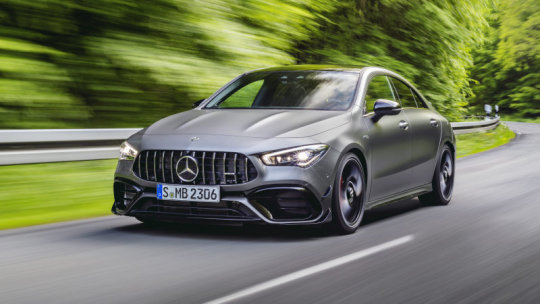
MONTICELLO, New York –– The M5 Competition needs a better name. The “Hammer” has been done. C’mon, Dodge has its colorful Hellcats and Demons. Yes, BMW is a sober German luxury brand, but appending “Competition” to the name and decklid of the standard M5 is too subtle for a midsize sedan that can nip a 647-hp Ford GT supercar to 60 mph (BMW says it’ll do the deed in 3.1 seconds, but Car and Driver timed a regular M5 at 2.8 seconds, so it’s almost assured that it’ll beat the GT’s 3 second time. – Ed.), and its claimed 10.9-second quarter-mile is just 0.1 seconds behind the Ford, or the 797-hp Dodge Challenger Hellcat Redeye. That’s madness, or in German, Der Wahnsinn. (Hey, maybe that’s the name!) The M5 Competition’s 617 horsepower (17 more than the M5) and 553 pound-feet of torque is equally Wahnsinn, as I discover during laps at my local stomping grounds, the Monticello Motor Club in New York’s Catskills. To the untrained eye, this M5 might be any other 5 Series, that longtime upholder of the luxury sedan status quo. Trained eyes will spot that Competition badging – optional on front fenders, in case you’d prefer to stay stealthy – with higher-volume air intakes and gloss black applied to the kidney grille, mirror caps, fender gills, rear Gurney lip and apron diffuser. There are also 20-inch lightweight forged alloys and four black-tipped exhaust outlets. After multiple stairsteps in power and price from your basic 530i – from $54,395 and a 248-hp turbo four, to $110,995 and a 4.4-liter, twin-turbo V8 – the M5 Competition helps advance the (somewhat pointless) arms race in sport sedans, provoking both the 603-hp Mercedes-AMG E 63 S, and the 605-hp Audi RS7 Performance.

The last time I drove the standard M5, I was staging an Escape from New York when a wheel was mangled by an evil pothole on Manhattan’s West Side Highway. Day trip, spoiled. This time, I was determined to make it to Monticello in one piece, because this baby is even stiffer: Springs and hydraulic dampers are 10 percent firmer than the regular M5’s, the rear anti-roll bar is stiffened, and it’s 0.28 inches lower. For better wheel guidance at the rear, the toe link’s rubber mounts are exchanged for ball joints. BMW says the tauter core can be felt even in the car’s Comfort mode, and the morning’s jouncy run on the ancient, hand-cut Belgian blocks of my Brooklyn street seems to confirm it. The M5 makes its entrance through Monticello’s artistically wrought metal gates, flashing an equally classy paint called Donington Grey Metallic. I sign the clipboard sheet proffered by the guard, peering through the BMW’s generous windshield at the rain-dampened 4.1-mile circuit. I’ve enjoyed the adjustable embrace of the BMW’s sport seats, clad in handsome saddle-colored “Aragon” Merino hides. Here, evidence of the M division’s handiwork is subtle, including red-and-blue striped M seatbelts. Round digital gauges flash concentric rings of animation as you approach the 7,000 RPM redline. This more driver-centric M5 sports digital gauges that are an homage to classic, analog BMW dials, which I prefer to the wraparound displays of the “Live Cockpit Professional” that makes its 5 Series debut on the 2020 M5 35 Years Edition. I ease into the paddock and clubhouse garage, where track-suited club members are futzing with roll-caged, race-prepped exotics. One or two seem to cast side-eye at the BMW and its pilot, perhaps wondering why anyone would take this 4,370-pound, all-wheel-drive barge onto the track. Some will soon pay for their insolence, when the BMW applies its unfair horsepower advantage to leave peashooter Porsches in its 617-hp wake. Like the M5, the Competition’s other secret weapon is an M-tuned AWD system and active rear differential, which together banish old-school wheelspin, seemingly no matter how hard you try to break things loose.

The track is still drying when I’m first waved out of the pits, with scary-looking lagoons lurking in places. For all its fierceness and technology, the BMW feels a bit squishy and vague at first, especially in the wet. But AWD is the new secret sauce of any new M5. For max performance in any situation, just set-and-forget the 4WD Sport mode, which sends more torque rearward and applies a freer algorithm to stability systems. After years of testing M cars, I’ve made peace with their somewhat fussy controls that here include individual settings for the steering, suspension, exhaust and eight-speed, dual-clutch transmission. Twiddling has become easier since BMW added two ruby-colored steering wheel switches – labeled M1 and M2 – to store a pair of your preferred combinations of settings. For the suspension, I select the Sport mode that BMW perfected for Nürburgring’s pockmarked Nordschleife circuit. The company recommends Sport Plus for creamier, Grand Prix-style surfaces. Compared to the M5, the Competition also gets a firmer link to the aluminum-and-carbon structure through engine mounts with increased spring rates, which BMW says creates faster engine response and sharper corner turn-in. Um, if you say so. Increased camber for the front axle does help this big barge absorb lateral forces through its Pirelli P Zero PZ4 tires. That’s a good thing in tight sections like the esses that zig uphill just after MMC’s longest straight. As for that mildly kinked, mile-long gauntlet – which I’ve long used as a no-excuses benchmark for accelerative might – the M5’s bombastic power rockets it to around 159 mph, only about 11 or 12 mph less than my apogee in supercars like the McLaren 675LT or Ferrari 488. So yeah, it’s fast. Peak torque is served anywhere between 1,800 and 5,800 rpm, a 200-rpm wider band than the M5. The BMW’s gold-caliper, carbon ceramic brakes, an $8,500 option, help keep fade at bay, even at these Autobahn speeds – though they do begin to smell (but not smoke) after seven or eight consecutive laps.

Chris Duplessis, the former pro rally champion and all-purpose nutjob who’s MMC’s track director, has coincidentally been driving an M5 as a safety car. I let Duplessis take one of his usual half-sideways excursions around the circuit, and he concurs: The Competition perhaps feels a skosh tauter than the basic M5, and turns with more alertness, but it would take a back-to-back drive to tease out tangible differences. Aside from this Competition’s stony ride on poor pavement, and the Sturm und Drang as it boomed over freeway expansion strips, my only everyday gripe was a climate system that was stingy about dialing up the fan speed, even when I set the A/C to extremely low temperatures. Some drivers have groused that the standard M5 sounds too demure, and the Competition does amp up the soundtrack through its twin-pipe, flap-controlled exhaust. Hit the console’s exhaust switch, and the BMW speaks softly without dropping its big stick. Press it again, and this M5 sounds like a pissed-off bear that’s been woken from hibernation, including belching exhaust backfires. This M5 still doesn’t match the psychotic bellow of the Mercedes-AMG E 63, but it’s plenty aggressive for all but the most attention-seeking owner. So is the BMW fun on track? Yes, in a mildly silly, tiger-shark-out-of-water fashion. But it’s twice as fun on the street, where the M5 Competition underscores its Autobahn-style ferocity and magisterial handling. Mopar fans may howl, but in most street situations, the M5 Competition will easily smoke even a Dodge Challenger Hellcat from a stoplight – minus the smoke. Where even skilled drivers can struggle to launch the rear-driven Hellcat without the tires lighting up like Cheech and Chong, the BMW sends every molecule of rubber and scrap of torque to the pavement.

So, what’s it gonna cost? At $110,995, the Competition is an extra $7,300 over the base M5. Options, including the pricey carbon-ceramic stoppers, boosted my test car’s freight to a heady $132,095. Departing Monticello, I briefly switch into the car’s notorious, tire-abusing 2WD mode, the one that seems designed to stem the kvetching of BMW fans over the brand’s Good Old Days. For a minute or three, it is fun to drive the BMW like it’s a Dodge, only with exponentially more agility and control, exiting corners with smoke flaring from those poor Pirellis. The only dumb part is that you have to switch off stability control entirely to send all 617 horses to the back – with only modestly wide 285/35 R20 tires – which will at least make one appreciate the stability control's safety net even more. But catapulted along Cold Spring Road near the track, a ribbony dream that twists through tall stands of pine and spruce, the M5 Competition is just an embarrassment of riches: Drive it harder, then harder still. The BMW’s sick thrust and limitless confidence finally sucks the air from my lungs. Der Wahnsinn, indeed. Sedan madness, German-style. Read the full article
1 note
·
View note
Text

Wikipedia:
The record was broken multiple times during the COVID-19 pandemic, taking advantage of a reduction in both road users and law enforcement presence.
In April 2020, an anonymous crew traveled from the Red Ball Garage on the east side of Manhattan to the Portofino Hotel in Redondo Beach, California—a total of 2,825.3 miles (4,546.9 km)—in 26 hours 38 minutes. The team averaged 106 miles per hour (171 km/h). The record was completed in a 2019 Audi A8L with additional fuel tanks in the rear storage.
In May 2020, Arne Toman and Doug Tabbutt set the new cannonball record of 25 hours and 39 minutes during the COVID-19 pandemic in a modified 2016 Audi S6 disguised to look like a Ford Taurus police interceptor. Police-evasion modifications included brake light kill-switches, radar detectors, laser diffusers, CB-radio, and a roof-mounted thermal camera. Performance modifications included a trunk-mounted 67-gallon auxiliary fuel cell sourced from the car used in Toman and Tabbutt's 2019 cannonball run, modified turbochargers, an upgraded heat-exchanger, and custom ECU tuning that allowed for engine-mapping to be changed on-demand to suit either 91 or 93-octane fuel; allowing the car to generate an estimated 600 horsepower. The run achieved an overall average speed of 110 miles per hour (180 km/h) for the entire run, with average speeds upwards of 125 miles per hour (201 km/h) across some states, and which at no time exceeded 175 miles per hour (282 km/h).
In early June 2020, as reported by Road and Track, Fred Ashmore, completed a solo run in 25 hours and 55 minutes. Ashmore, driving a rental Ford Mustang GT equipped with a 5.0 Liter Coyote V8 and 10-speed automatic transmission, replaced the seats and interior of the vehicle with fuel tanks capable of holding approximately 130 gallons of gasoline, which allowed him to make only one fuel stop. Since the vehicle was a rental car, the modifications were made as covertly as possible as to leave no visible damage and allow them to return the vehicle to its original condition upon return of the vehicle to the rental company. Ashmore was able to achieve approximately 12 mpg (19,6 L/100km) with a moving average of 109 miles per hour (175 km/h), recorded on the GPS app Glympse as opposed to using dedicated tracking software like previous record holders.
Sub-24-hours is possible. (insert SummoningSalt monologue on frame rules)

this is the only reason i get news notifications on my phone
184K notes
·
View notes
Link
0 notes
Photo

@hptuners is now offering exclusive support for the 2020 Ford Mustang GT This vehicle will require an HP Tuners interface, and our latest version of VCM Suite Beta software. Licensing cost is 4 credits, and an internet connection is required. • • • #hptuners #hptuned #hpt #automotive #carlifestyle #horsepower #speed #tuning #ford #mustang #gt #mustanggt #ferd #furst https://www.instagram.com/p/B3F3VqpFi-V/?igshid=1x11ze66nmx0c
#hptuners#hptuned#hpt#automotive#carlifestyle#horsepower#speed#tuning#ford#mustang#gt#mustanggt#ferd#furst
1 note
·
View note
Text
Drivers Au URBANO PROGRESSO
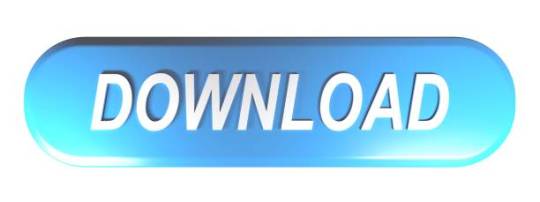
Au urbano progresso ケース バラ|5月30日発売の 大人のスマホ au urbano progresso(アルバーノ プログレッソ)のケースを集めました。. 12862円 ケース・カバー スマートフォン・携帯電話用アクセサリー スマートフォン・タブレット au アルバーノ v03 v02 v01 l03 l02 スマホ スマートフォン スワロフスキー デコケース デコカバー 送料無料 かわいい 大人系 上品 プレゼント ギフト 全 urbano l01 ケース カバー キラキラ スワロ デコ 上品.
Drivers Au Urbano Progresso La
Drivers Au Urbano Progresso De
Drivers Au Urbano Progresso 2020
Drivers Au Urbano Progresso En
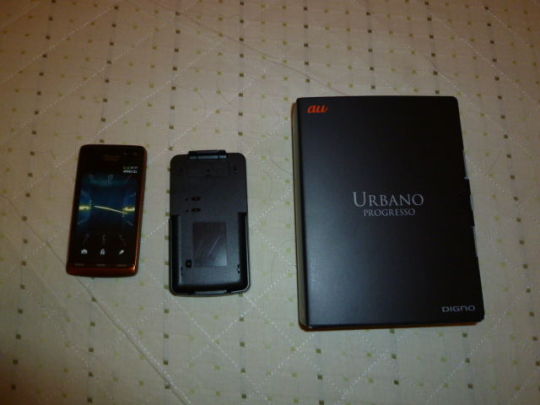
© Marc Urbano - Car and Driver 10Best: Ram 1500
Show us a vehicle that does it all and we'll show you a vehicle that's compromised in everything it does. That's the story of most modern full-size pickup trucks, which play a role that's part family SUV, part commercial vehicle, part luxury car, and part circus strongman. Sure, your truck tows an impressive 10,000 pounds, but chances are it rides like a tractor, especially with a bed full of nothing but air.
The Ram 1500 can't entirely escape these trade-offs, but it balances and minimizes them better than any truck on the market. Thanks in large part to the coil springs (or optional air springs) at each corner, the Ram rolls over broken pavement with exceptional civility. It goes down the road feeling more like a Mercedes-Benz GLS-class than a Ford F-150. It's the truck that can convincingly shrug off its agrarian roots to make the trip to Pottery Barn in comfort.
The terms of the software license agreement included with anysoftware you download will control your use of the software. Download advent dt1404 driver. INTEL SOFTWARE LICENSE AGREEMENT (Final, License)IMPORTANT - READ BEFORE COPYING, INSTALLING OR USING.Do not copy, install, or use this software and any associated materials (collectively, the “Software”) provided under this license agreement (“Agreement”) until you have carefully read the following terms and conditions.By copying, installing, or otherwise using the Software, you agree to be bound by the terms of this Agreement.
The awesome 702-hp Ram 1500 TRX carries its own predictable set of compromises: single-digit real-world fuel economy, a $71,790 starting price, and running boards so high they should come with a sign warning, 'You must be this tall to enter.' Surprisingly, though, on-road manners are not on that list. For a truck that's built for desert running, dune bashing, and hill jumping, the TRX is unexpectedly delightful on paved roads. It uses soft long-travel springs to absorb big off-road hits, but rather than squishing and pitching and rolling around in traffic, the TRX ratchets up the stiffness of its adaptive dampers in pavement-oriented driving modes, giving the truck a sense of control on the road that's absent in its only competitor, the Ford F-150 Raptor.
© Marc Urbano - Car and Driver 10Best: Ram 1500
In domesticating the American workhorse, Ram has built the best pickup for the way most of us use trucks today: as everyday transportation instead of as a special-purpose tool, moving people more often than payload and on suburban streets rather than in farm fields. On upper trim levels, Ram dresses the 1500's cabin with an attention to detail that shames many luxury cars. At 70 mph, it's as quiet as a church during the Super Bowl. For city slickers and cowboy commuters, the clever optional RamBoxes offer weather-tight, lockable storage that keeps cargo out of sight and out of the cab.
Our 10Best honor covers the full 1500 range, from the 305-hp base V-6 to the 702-hp TRX. Between those bookends, there's a diesel V-6 that scores up to 32 mpg in EPA testing and a 395-hp V-8 available with or without the eTorque 48-volt motor-generator. (We recommend going without it based on our 40,000-mile long-term test.) With any engine, the Ram is up for hard labor, but living with this truck is a reminder that the numbers—horsepower, tow ratings, and payload capacities—tell only part of the story. The eight-speed automatic is always ready to drop the engine into the powerband. The uncanny ride quality translates to great body control in curves. Every element feels as if the engineers made it a point to polish the pickup truck's rough edges.
Drivers Au Urbano Progresso La
© Marc Urbano - Car and Driver Ram builds the perfect truck for a world where pickups can be SUVs and luxury vehicles, too.
We're still car people at heart. We like the sure-footed handling of vehicles that are light and relatively low to the ground, and we typically respect the utility of a truck with an emotional detachment. But the Ram is so uniquely good to drive that it transcends the pickup-truck status quo. When we say that the Ram 1500 is the full-size truck that comes closest to driving like a car, we mean that as a high compliment. Why drive a big lumbering brute when you can drive a big nimble brute?
Drivers Au Urbano Progresso De
© Marc Urbano - Car and Driver 10Best: Porsche Macan
You should know that the Porsche Macan shares some of its components with humbler and cheaper models from elsewhere in the Volkswagen Group. You should know this not because it matters but because friends and casual acquaintances are likely to share this information in the belief it makes the Macan less of a Porsche and anyone who buys one less of a judge of cars.
You know better, though. If you're not looking for a low-slung sports car, this is the pick of Porsche's range, even if it is currently the oldest member of the clan. In engineering, as in high-end hash slinging, the finest chefs can turn even humble ingredients into truly sublime creations.
Agfeo isdn as 1x driver download. Also added support for PCI detection by making the driver NBI aware. DescriptionDevice DriverOperating SystemNovell 4.11Version5.05Size Driver164KbFile Name1800014b.zipObservationsfor Novell 4.X and 5.0 is available RocketPort/RocketModemNovell Driver AssemblyHistory20 Mar 2000 - 5.05Updated AIORCKT.DOC11 Feb 00 - V5.04Update the driver to support the PCI RocketModem boards. Rawrite allocates a large buffer in RAM toreduce the number of disk swaps.RaWrite may be aborted at any time by typing ^C or CTRL-Break. The FINDRCKT DOS utility has been removed and its functionality has been moved inside the driver and can be used by entering 'LOAD AIORCKT FINDPCI'.
© Marc Urbano - Car and Driver 10Best: Porsche Macan
While the Macan looks like an SUV, it doesn't drive like one. Smaller and more agile than the Cayenne, it can be hustled like an oversized hot hatch. You sit higher from the ground, but the Macan corners with a deftness and adjustability completely at odds with its shape and stance, resisting understeer about as well as anything with an engine up front thanks both to its huge traction and its willingness to play.
As in previous years, the Macan's 10Best award is restricted to the V-6 models, all of which use turbocharged engines shared with other Porsche and Audi vehicles. The list now includes the newly arrived 375-hp GTS, which occupies the narrow niche between the 348-hp Macan S and 434-hp Macan Turbo. The GTS is our pick of the range due to its combination of sonorous performance, a pliant ride, and steering that gets amazingly close to the feel and precision of Porsche's sports cars. We took the GTS to a racetrack during 10Best testing—the only SUV to make that cut—and were charmed that it's not just competent but every bit as entertaining as the two-door 10Best winners. This rare spread of talents means that one Macan can effectively turn your single-car garage into a multi-horse stable.
Drivers Au Urbano Progresso 2020
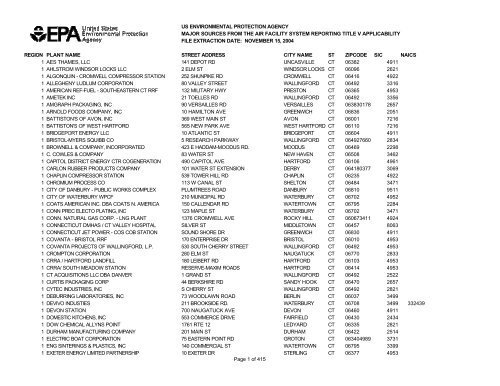
Drivers Au Urbano Progresso En
© Marc Urbano - Car and Driver Porsche's small SUV corners with a deftness that's completely at odds with its shape and stance.

0 notes
Text
2019 Ford GT Engine, Colors, And Price
2019 Ford GT Engine, Colors, And Price
2019 Ford GT Engine, Colors, And Price – Individuals who aspire to obtain or see among the all-new Ford GT Supercars can observe! Ford declared the extension of manufacturing of Ford GT.
Letters have already been sent to prospective customers of the two-12 month’s extension of 2019 Ford GT Supercar.
2019 Ford GT – Exterior and Interior
The general leads of the new 2019 Ford GT are fantastic. When…
View On WordPress
#2020 Ford GT#2020 Ford GT 0 60#2020 Ford GT 500#2020 Ford GT Engine#2020 Ford GT For Sale#2020 Ford GT Horsepower#2020 Ford GT Interior#2020 Ford GT Price#2020 Ford GT Specs#2020 Ford GT350#2020 Ford GT40#2020 Ford GT500#2020 Ford GT500 Price#2020 Ford Mustang GT#2020 Ford Mustang GT350#2020 Ford Mustang GT500#2020 Ford Mustang GT500 Super Snake#2020 Ford Shelby GT500
0 notes
Link
Three Electric S.U.V.s With Tesla in Their Sights An electric trickle is turning into a flood: As many as 100 new E.V. models are coming to showrooms by 2025. Heavyweights including Volkswagen, General Motors and Ford are floating promises of all-electric lineups within a decade. The end times of gasoline can almost seem a fait accompli, except for one pesky issue: Even given Tesla’s strides, we’re still waiting for the first genuine E.V. sales hit, let alone a mass exodus from unleaded. In 2014, Nissan sold a mere 30,200 Leafs, and that’s still the American record for any non-Tesla model. Ford routinely sells more than 800,000 F-Series pickups. A single gasoline sport utility vehicle, the Toyota RAV4, finds well over 400,000 annual buyers, compared with roughly 250,000 sales last year for all E.V.s combined — 200,000 of which were Teslas. Automakers insist we’re “this close” to a tipping point. E.V. market share is expected to grow to as much as 50 percent by 2032, from just 1.7 percent last year, said Scott Keogh, president and chief executive of Volkswagen of America. While Tesla captured 80 percent of the U.S. market for electric vehicles in 2020, VW and other global giants — with war chests built on internal-combustion engines and unmatched scale and manufacturing know-how — are well positioned to take a piece of Tesla’s pie. “There’s never been a competitive consumer product that sits at 80 percent market share” for long, Mr. Keogh said. Globally, Volkswagen is poised to pass Tesla as the world’s biggest electric vehicle seller as early as next year, according to Deutsche Bank, with Europe and China its key markets. In America, where the brand remains an underdog, VW and other legacy automakers are concentrating fire on the sales fortress of compact S.U.V.s: Models like the RAV4, which deliver roughly four million annual segment sales. The idea, as ever, is to drive down prices and charging times of E.V.s, while bolstering driving range, until consumers see no reason to stick with polluting gasoline models whose energy-and-operating costs exceed the plug-in alternatives. Like the Rolling Stones pushing the Beatles, Mr. Keogh said, healthy competition will ultimately benefit all E.V. fans and creators. And when consumers sees E.V.s proliferate in their neighbors’ driveways, and take their first test drive, there will be no going back. “When you drive one, you’re driving the future, and that’s what people are going to want, no debate,” Mr. Keogh said. The latest electric-S.U.V. hopefuls to reach showrooms are the VW ID.4, Ford Mustang Mach-E and Volvo XC40 Recharge. The Nissan Ariya, BMW iX and Cadillac Lyriq are set to arrive between late 2021 and next March. I drove the VW, Ford and Volvo to see which might knock Tesla’s Model Y S.U.V. down a peg — or at least outsell the 2014 Leaf. Ford Mustang Mach-E Ford has branded its fabled Mustang name on an electric S.U.V., inflaming some boomers in the process. But the Mach-E seems the most straight-up rival yet to Tesla’s Model Y, in not only price and performance but also the Ford’s maximum 300-mile driving range. Consumers have noticed: Ford sold 3,729 Mach-Es in February, the first full month of sales, almost single-handedly chopping Tesla’s dominant E.V. share to 69 percent, from 80 percent. If Ford could maintain that pace for a full year, the Mach-E would easily set a sales record for an E.V. not built by Tesla. Tesla’s 326-mile Model Y Long Range still squeezes a few more miles from each onboard kilowatt-hour, owing to the carmaker’s expertise in aerodynamics, motor and battery efficiency, and to “simple” stuff that’s anything but: Its 4,416-pound curb weight undercuts the Ford by about 400 pounds. And Tesla rules the public charging space, with its Supercharger network that has rivals — now with a potential infrastructure lift from the Biden administration — racing to catch up. The Ford fires back with a sculpted exterior versus the dad-bod Model Y, a tech-savvy interior with superior materials and craftsmanship, and winning performance of its own. With 346 horsepower from dual motors, the Mach-E Premium A.W.D. that I drove shot to 60 miles an hour in 4.8 seconds. Even the new Shelby GT500 — history’s mightiest Mustang, with 760 horsepower — won’t equal the 3.5-second 0-to-60 m.p.h. blast of this summer’s Mach-E GT Performance version. The Shelby would shame the Mach-E or Tesla on any winding road, of course. Yet the Mach-E is reasonably fun through the curvy stuff, and glides with addictive thrust and confidence. A cinema-scale, 15.5-inch touch screen sneaks past the Tesla’s 15-inch unit. Like other E.V.s, the Ford broadcasts its presence below 20 m.p.h., a throat-clearing hum to alert pedestrians. Inside, in its driver-selectable “Whisper” mode, the Ford would please the most persnickety librarian. Dial up “Unbridled” mode and the Mach-E trades glorious silence for an overwrought, faux-engine sound: Think a V-8, remixed by Kraftwerk. The soundtrack is apparently for people who need to be weaned off gasoline’s combustive beat, but it can be shut off with a screen switch. E.V. shoppers can whistle over the Ford’s price, as little as $36,495, or $48,300 for the extended-range A.W.D. model. Those prices include a $7,500 federal tax credit that’s denied to buyers of Tesla (or General Motors) E.V.s, because those automakers have sold too many to qualify. So despite Tesla’s major, defensive price cuts for 2021, the most-affordable, 230-mile-range Mach-E undercuts Tesla’s 244-mile Standard Range by $6,700. A Mach-E Premium A.W.D. saves $2,900 versus a Model Y Long Range. In a surprisingly taut, compelling matchup with the Tesla, credit the government for what may be the Ford’s most alluring advantage: a $7,500 discount. Volkswagen ID.4 No, Volkswagen is not changing its name to Voltswagen, as the company briefly convinced some media and car fans in a marketing stunt gone bad. Regarding historic names, VW calls the ID.4 its most significant model since the original Beetle. But where the Beetle was a revolutionary leader, the ID.4 feels like a follower. Based on my drive, the VW can easily top its 250-mile range rating, with 275 miles within reach. A rear-drive, 201-horsepower model rolls to 60 m.p.h. in 7.6 seconds. That’s on a par with gasoline sport utilities like the Honda CR-V, but pokey by E.V. standards. Dual-motor, all-wheel-drive models arrive later this year, promising 60 m.p.h. in under six seconds. From a company famed for fun-to-drive German cars, the ID.4’s generic performance and styling are letdowns. Its infotainment system is even more disappointing: The clunky, vexing touch screen can’t touch the onscreen wizardry of the Ford, Volvo or Tesla. The VW’s snappiest performance came during a fast-charging session at a Target in New Jersey, replenishing its 77 kilowatt-hour battery from 20 to 80 percent in an impressive 31 minutes. That growing network of Electrify America chargers is funded by VW’s $2 billion, court-ordered penance for its diesel emissions scandal. And VW is offering indulgences to ID.4 buyers, with three years of free public charging. Thrifty virtues include a $41,190 base price, or $33,690 after the $7,500 federal tax break. That’s $2,800 less than the most-affordable Mach-E. It’s also less money, after credits, than a smaller Chevrolet Bolt. The more powerful ID.4 with all-wheel drive will start at $37,370, postcredit. Still, as Tesla’s triumph and Chevy’s lukewarm Bolt have proved, there’s more to electric success than an attractive price. VW is aggressively investing $80 billion to develop E.V.s, but the ID.4 feels less like a market splash and more like a toe in the water. We’ll see if VW erred by not kicking off with a recognizable design that truly connects its nostalgic, weed-hazed past to today’s green virtues: the electric ID.Buzz Microbus, due in 2023. Volvo XC40 Recharge Volvo seems such a natural fit for E.V.s. And the progressive-minded brand brings us the XC40 Recharge, an electrified take on its gasoline XC40. The Recharge is like that perfect dining table in a shelter magazine: You’re not sure why it costs so much, but you want it anyway. The Recharge’s wedgy Scandinavian styling tops every S.U.V. in this group, as does its lovely interior. That includes soft Nappa leather, versus the ascetic “vegan” materials of many E.V.s. The drive is similarly breezy, with 402 horses and a quicksilver, 4.7-second flight to 60 m.p.h. The biggest tech talking point may be Android Automotive OS: The Recharge (and Volvo’s electric Polestar 2) introduces a cloud-based Google operating system that works like a dream, with Google Maps, search, an ultra-capable voice assistant and more. (Don’t confuse this with the ubiquitous Android Auto, which simply mirrors phone apps on a car’s screen.) Several major automakers, including G.M. and Ford, plan to make Android Automotive the nerve centers of coming cars. If only the Volvo itself were as efficient. The Recharge is an electron guzzler, with a 208-mile range that seems optimistic in real-world use. I drove the Recharge in frigid New York weather, which explained some but not all of its hunger for power: No matter how I babied the throttle, the Volvo stayed on a pace for 190 miles, at best, covering about 2.4 miles for each kilowatt-hour in the batteries. I can achieve 3.6 miles per kilowatt-hour with little effort in the Tesla Model Y and above 3.2 in the Ford. Environmental Protection Agency numbers bear that out: Despite having virtually the same-size battery, the Tesla brings 326 miles of maximum range, 118 more than the Volvo. The Recharge is also expensive for its intimate size: $54,985 to start, and nearly $60,000 for the model I drove. That $7,500 federal tax break softens the blow. Yet if the Volvo indulges bourgeois buyers, they’ll also need to indulge its profligate ways. Source link Orbem News #Electric #Sights #SUVs #Tesla
0 notes